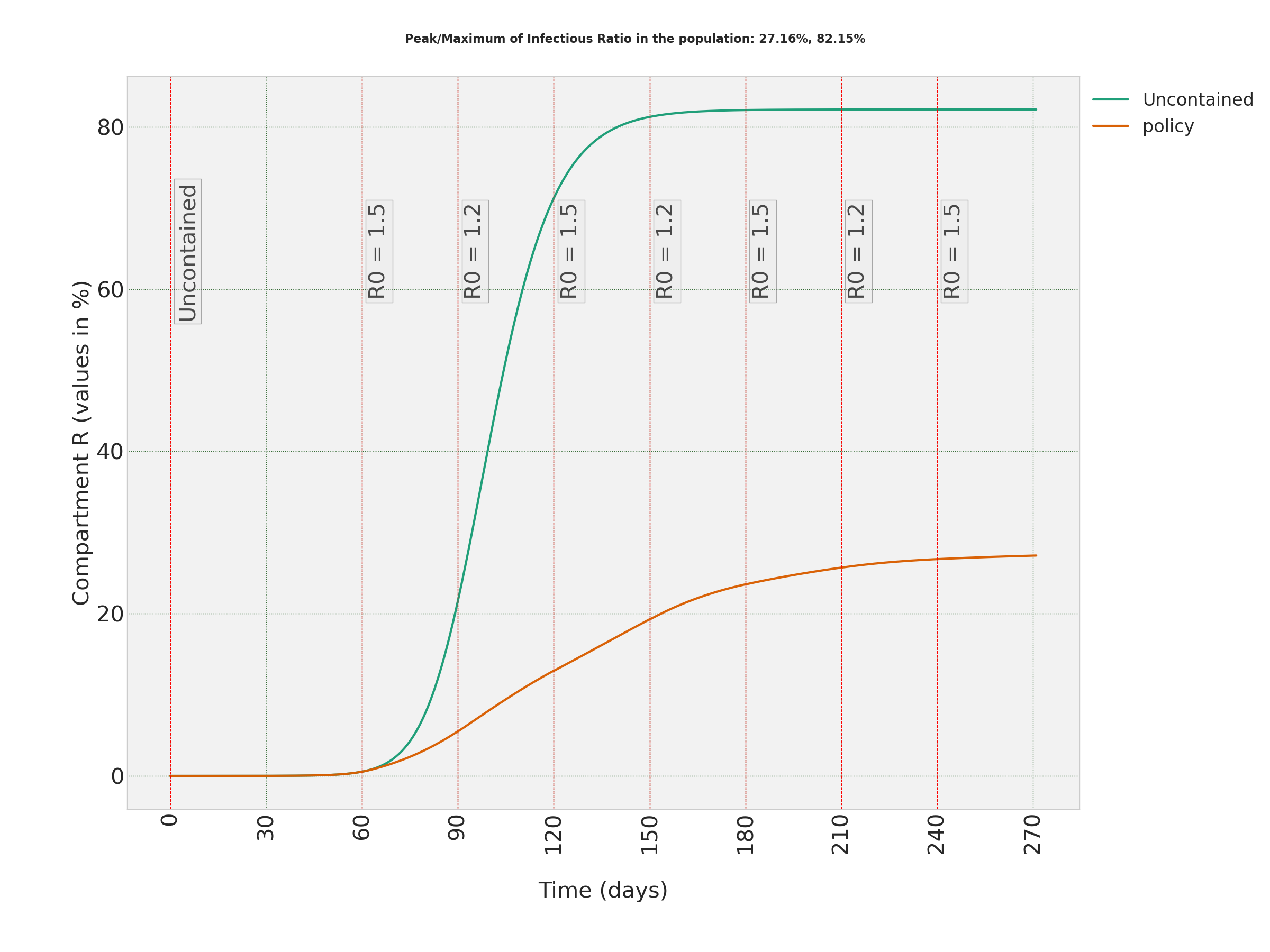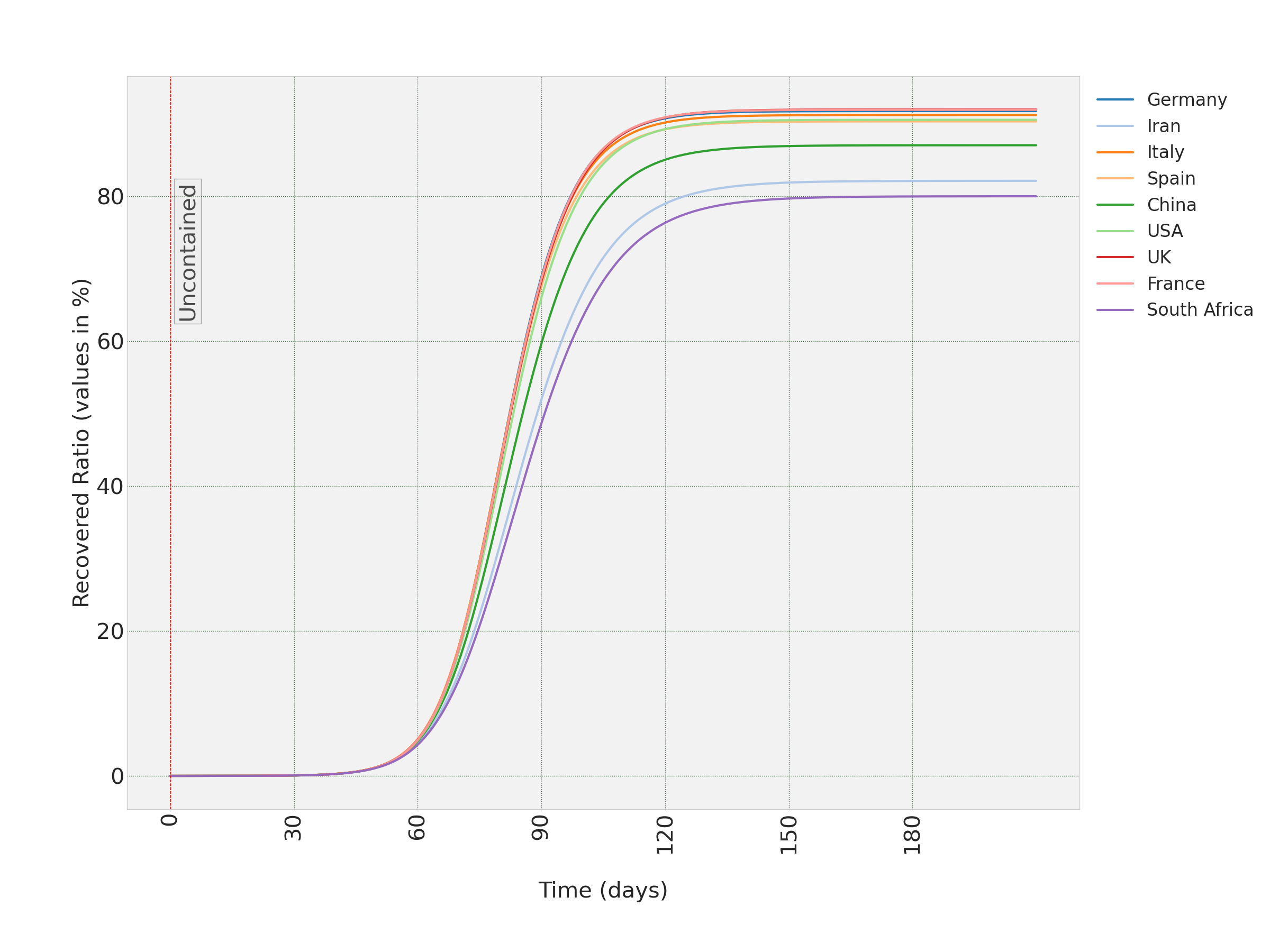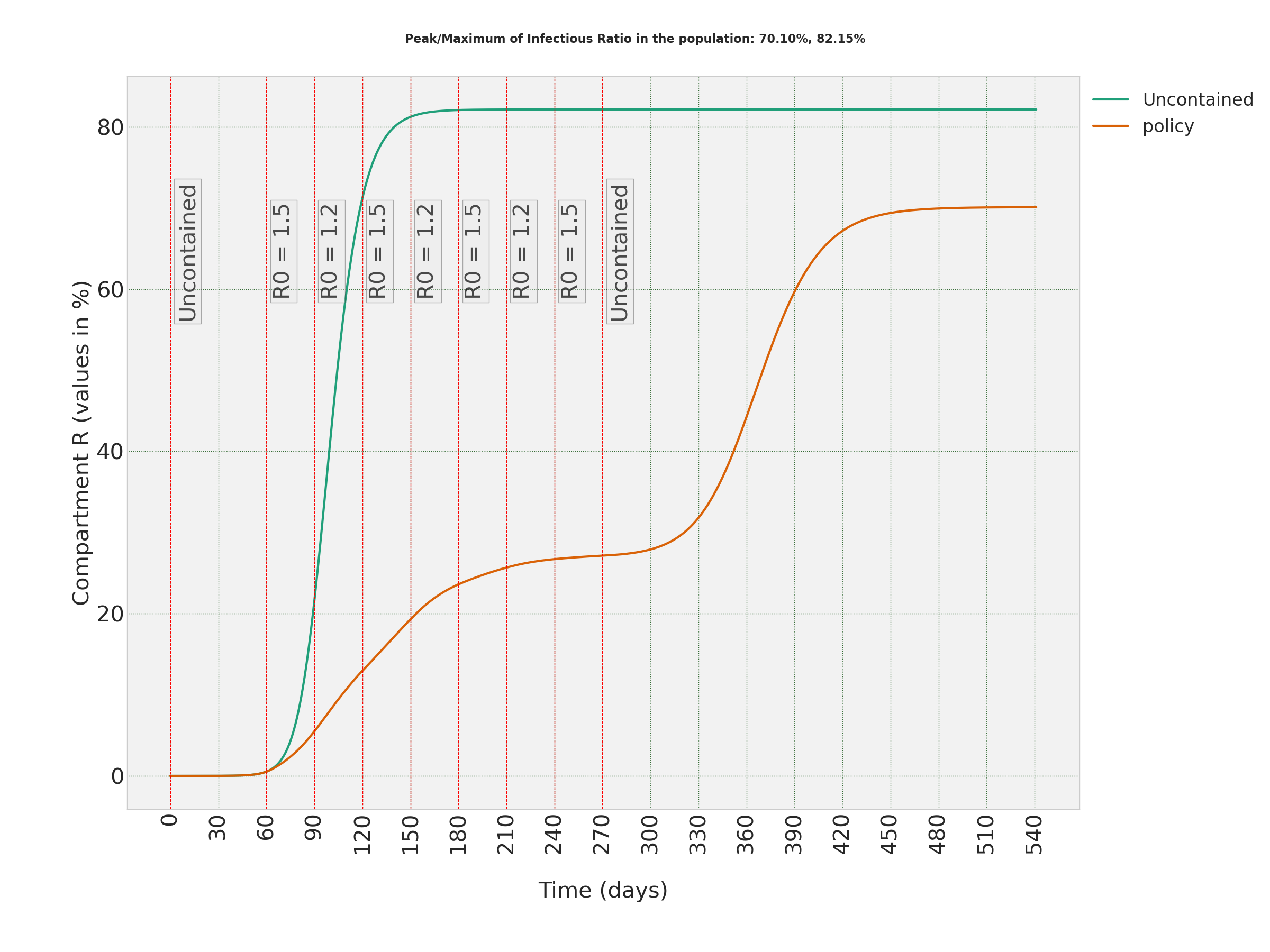Iran and COVID-19: Living through a
Humanitarian Disaster.
Vahid S. Bokharaie
November 1, 2020
PDF version of this report can be found here.
Amendment 1 (Nov 22, 2020): In the earlier version of this report, I have used Infection Fatality Rate (IFR) of 0.6 in calculating the total number of death due to COVID-19 in Iran. The output of the method I have developed is the instantaneous and total number of Infectious and Recovered and Susceptible people in a population and not the total number of deaths. How many of the Infected will die or might need intensive care is beyond the scope of the methodology and this value of the IFR was based on what I concluded from the literature, given the total lack of credible official information. After publishing the report, studies such as this (and references therein) were brought to my attention, in which IFR ≈ 0.35 for Iran is recommended. Right now, based on what I have read on the subject, I have not seen convincing evidence that which exact value for IFR is closer to reality for the population of Iran. Hence I have left out the explicit values of mortality from the report until I can reach a conclusion about the subject. But whatever value of IFR you consider, the mortality rate can be easily calculated. Assuming 27% of the 85 million population of Iran have been infected in total, with IFR=0.6, that is around 138K and with IFR=0.35, that is around 80K deaths.
Amendment 2 (Nov 22, 2020): In the report, I estimate that as of
November 1st, 27% of the Iranian population have been Infected with
SARS-CoV-2. But then report such as this was brought to my attention, in
which seroprevalence study done in Iran in May shows in some provinces as
much as 34% were seropositive and on average 16% in the whole country
(interestingly enough, the report is not accessible to IP addresses outside
Iran!). More evidence to support the possibility that the 27% estimate is in fact
an underestimate. That shows the need to do the estimate in a finer spatial
resolution than what I have used in this report. And also, to fine-tune the
assumption about initial conditions and the time-varying values of R0 since the
spread of the virus. I invite all students and researcher who are interested in
the subject to use MiTepid_sim library to try various cases which I did not
have time to consider.
Summary of the Report
This report aims to estimate the actual number of those who are infected in
Iran and those how have lost their lives, based on a mathematical model I have
developed and simulations I have done based on that model. The main findings
are as following:
Seven months ago, I wrote a report called Iran and COVID-19: The Unfolding of a Humanitarian Disaster. Using mathematical models, I predicted what would happen if there are no proper containment policies in place in the country. Now it is time to look back, re-evaluate some of the predictions and address some other relevant questions. Before reading the detailed discussions, there are a few points that need to be considered:
Figuring out what is the current status of the spread of COVID-19 in Iran is as difficult now as it was 7 months ago. The major hurdle is the lack of transparency in reporting the true number of deaths caused by COVID-19. In addition, there are no credible statistics on the number of confirmed cases. This is partly because there is not enough capacity and organisation to do reliable PCR tests in Iran. Hence, it is not possible to have a reliable estimate on the variations in the Basic Reproduction Number in Iran which is necessary to evaluate the effectiveness of current containment policies and decide accordingly. This report aims to give an estimate of the current situation, considering some assumptions which are discussed below. The details of the mathematical model can be found here.
In order to obtain the estimates of the current total number of those who have been infected with SARS-CoV-2 in Iran, I have assumed that firstly, in the first two months of the spread of the virus in Iran, i.e. mid-January till mid-March there was no containment policy in Iran. That is a reasonable assumption considering the fact that for most of that time period, the government was completely denying the spread of the virus in the population. And then, I have assumed that changes in the behaviour of the population, has brought the Basic Reproduction Number, R0, down to somewhere between R0 = 1.20 and R0 = 1.5. To put it in perspective, for SARS-CoV-2, R0 in a completely uncontained population is estimated to be R0 = 2.95. That means I assume the probability of the spread of the virus is brought down to between 40% and 50% of the uncontained case. Also, there have been obvious moments in time in which such interactions have been fluctuating wildly. As an example, during the season for Shiite rituals, the government not only did not prohibit large gatherings, it encouraged them. And given what we know about the importance of super-spreaders in the spread of SARS-CoV-2 (discussed in more detail below), that means there have been quite a few bumps in the values of R0 during the past few months. With all that in mind, I have assumed R0 has been alternating between 1.20 and 1.50 each month since mid-March. Which admittedly is an optimistic estimate, but hopefully not too much so. With those assumption, the current situation in Iran should be close to what we can see in Figure 0.1. As we can see, under the above-mentioned assumptions, right now at least 27.12% of the population has been or are infected with SARS-CoV-2. Based on that, we can estimate how many people have lost their lives to this disease. I have seen many estimates for Infection Fatality Rate, IFR, which is the number of death to the actual number of infected people. IFR should not be confused with CFR, which is the measure usually used in many news outlets. CFR, Confirmed Fatality Rate, is the ratio of the number of dead to the number of confirmed cases, which is always less than actual infected numbers. Estimates for IFR vary between 0.5% and 1.0% but 0.6% seems to be more probable more the population of Iran, which is younger than many countries, hence with a lower fatality rate.

Given what we could estimate about the current situation in Iran, the next important questions are:
Answering the first question has nothing to do with Iran in particular. Based on the latest studies and research, there is room for optimism that SARS-CoV-2 infers immunity, at least in the short-term. You can have a look at this for a detailed discussion on the topic, and you can look at this study on a metamathematical analysis of what might happen if there is no long-term immunity. But all things considered it seems there is still room for optimism and if people infected with SARS-CoV-2 are immune to the virus, then when the total number of those who are immune to the disease reaches a certain threshold, the virus cannot find new hosts and the disease will eventually die out. There are two possibilities to reach Herd Immunity. One is natural herd immunity, in which the virus infects the population and spreads until it runs out of new susceptible individuals. But that means a significant ratio of the population would be infected and many people would lose their lives. Another possibility to reach herd immunity is vaccination, if and when it is available. You can look at Section 3.4 of the above-mentioned preprint for a discussion on that.
Figure 0.2 shows under what conditions various countries can reach natural herd immunity. Countries with a younger population such as Iran can reach the threshold sooner than countries with older populations such as Germany.

Please note that Figure 0.2 assumes the populations are uncontained and remain uncontained until we reach herd immunity. But if we impose any containment policy, the eventual threshold decreases. Figure 0.3 shows what happens if we continue from Figure 0.1 with an uncontained scenario. It shows that the threshold for herd immunity decreases from 82% to 70%.

Although this section has nothing to do with the modelling and mathematical analysis that I have done, given the importance of the issue, I find it necessary to highlight the following two important issues that seem to be completely ignored in Iran. Apart from wearing masks and social-distancing that we should all adhere to, there are two issues worth highlighting. One is contact-tracing and that means if a person tests positive, the people who have been in direct contact with that person should be informed, so they test for COVID-19 and self-quarantine if necessary. Contact-tracing can be done using apps developed by health authorities, likes of which are common in some countries. Or it can be done manually by the person who is tested positive or by health authorities. Studies and also experiences of countries who have been more successful in stopping the spread of SARS-CoV-2 show that contact-tracing is very important to bring the Basic Reproduction Number below 1.0. You can also look at this preprint for a mathematical analysis of the effects of contact-tracing and its importance in slowing down the spread of the disease.
The other important issue is that we should avoid big gatherings for any reason at all. Studies have shown that Super-Spreaders play an important role in spreading SARS-CoV-2. Super-Spreaders are those individuals that can transmit the virus to many people. It is still not fully known why some people become super-spreaders. But evidence shows they play a more important role in spreading SARS-Cov-2 than other viruses. You can look at this paper and more importantly, this study, that shows based on the data gathered in India, 5% of infected individuals have caused 80% of new infections. Such evidence points to the importance of avoiding large gatherings of people for any reason: political, social, or religious.
Last updated on November 22, 2020.